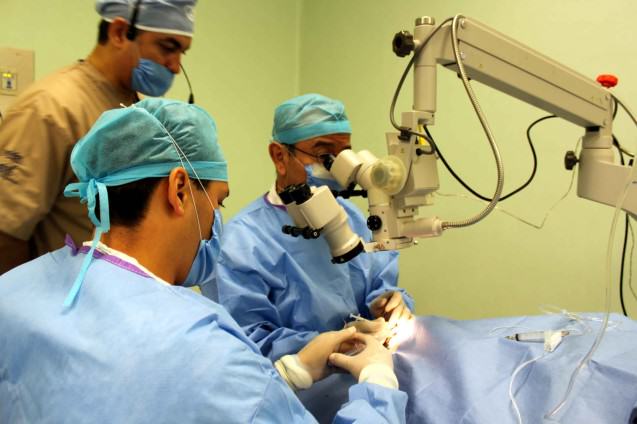Strabismus and Orthoptic
At the Amigó Eye Institute we offer different treatment methods depending on your case: from the use of glasses or patches to surgery.
| Orthoptics is a specialty of Optometry responsible for the assessment and measurement of
mild, moderate and severe deviations of the eye-muscles. It also deals with the stimulation and management of amblyopia (lazy eye), optometric problems in children and the recovery of disturbed visual functions. Among its treatment methods are the use of glasses, eyepatches and certain kinds of specific exercises. If appropriate eye movement is not achieved, the surgical option may be necessary. |
This does not restore lost vision to the lazy eye, but can help reduce the degree of squinting. That is, after surgery the eyes should be able to look at one point at the same time, but vision problems can remain. In general, the younger the child when the surgery is done, the better the results. Adults with mild strabismus that comes and goes can be treated and become comfortable with glasses or special exercises. More severe forms of strabismus in adults may also need surgery to straighten the eyes. If the squint is due to loss of vision ( for example cataracts) the cause should first be solved. |
StrabismusThis is a disorder in which the two eyes are not aligned in the same direction, and therefore do not look at the same object at the same time. It is commonly known as squint or even ‘cross-eyedness’. CausesSix different muscles surround the eyes and they should work ‘as a team’ for both eyes to focus on the same object at the same time. When this occurs, two separate images are sent to the brain – one for each eye. This confuses the brain, which learns to ignore the image from the weaker eye. Amblyopia may also be caused by the need for eyesight correction with glasses or by a great difference in graduation between the two eyes. It is sometimes the primary cause of the strabismus. In most children with strabismus, the cause is unknown. In over half the cases, the problem was present at birth or shortly thereafter (congenital strabismus). Most of the time, the problem is related to muscle control, not to muscle strength. |
Associated disorders
Furthermore, a family history of the disease is a risk factor, as is long-sightedness, especially in children. Any other condition that causes loss of vision may cause strabismus. The symptomsIts symptoms may be present constantly or only when tired or sick. The eyes do not move together and sometimes appear crossed. One eye seems to be looking the other way when the other is focusing on an object. A person with strabismus may also have: loss of depth perception, double vision and/or vision loss. |
OrthopticsOrthoptics is a specialty of Optometry responsible for the assessment and measurement of
mild, moderate and severe deviations of the eye-muscles. Among its treatment methods are the use of glasses, eyepatches and certain kinds of specific exercises. If appropriate eye movement is not achieved, the surgical option may be necessary. Such surgery does not restore lost vision to the lazy eye, but it can help reduce the degree of squinting. That is, after surgery the eyes should be able to look at one point at the same time, but vision problems can remain. In general, the younger the child when the surgery is done, the better the results. Adults with mild strabismus that comes and goes can be treated and become comfortable with glasses or special exercises. More severe forms in adults may also need surgery to straighten the eyes. If the squint is due to loss of vision ( for example cataracts) the cause should first be solved. |
Find out more about strabismus and orthoptics in our blog.


